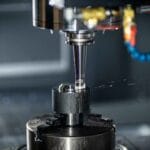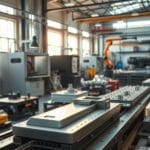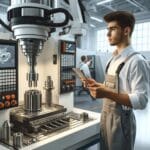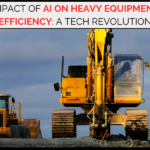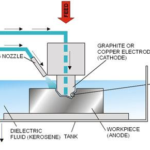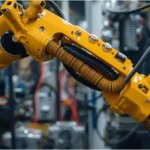
In almost every industry, there is a significant need to adopt the latest and most advanced technology to give companies a competitive advantage. Key business sectors such as the healthcare industry and e-commerce firms are constantly exploring new ways to integrate the latest tech to improve efficiency and productivity. Especially in the healthcare sector, technology is used to improve patient outcomes and assess patients more effectively. For example, MRI scanners have become commonplace to diagnose a range of conditions and pinpoint the location of traumatic injuries.
Today, nanotechnology is being rolled out across this sector to give novel ways of treating patients with a range of conditions. However, in this article, there is a clear focus on the manufacturing industry. As with other sectors of commerce, harnessing the latest technology is vital to stay competitive in an increasingly global marketplace. There will be a discussion of how three key tech developments in this sector are allowing firms to enjoy improved productivity and reliability in their operations, amongst other benefits.
In Food Processing
The developed world relies on food production from manufacturing facilities to feed the population and allow people to purchase a wide range of processed foods. Production lines are highly efficient and need to process ingredients and materials at high volumes on a continuous basis. One way technology helps in this field is with the use of advanced Liquid Ring Vacuum Pump apparatus on the production lines. These pumps are highly engineered and are suitable for a range of liquids that go into food preparation. They pump at high volumes by rotating a working wheel in the chamber of the apparatus. This allows a vacuum to be created (and any gasses to be removed from the liquid) before moving the substance further down the production line. Such pumps are essential in food manufacturing, and their advanced design means there is minimal wear and tear on the equipment. This reduces maintenance and downtime of production lines, thus keeping to a high and constant level of operating efficiency.
While these devices may not be highly visible in a food manufacturing plant, they are vital for achieving high levels of output. When you consider that downtime can account for up to 20% of food manufacturing working time, such tech plays a key role in maintaining production efficiency.
Also Read:
- How Robots Are Transforming Industrial Manufacturing?
- What is Powder Metallurgy – A Modern Manufacturing Process
- 3D Printing Enables Flexible Automotive Manufacturing to Meet Market Demands
Emerging Dark Factories
Only a decade ago, the concept of dark factories was nothing more than science fiction. However, they are rapidly being rolled out in manufacturing industries. As the name suggests, these factories do not require heating and lighting. They achieve this by relying on an entirely autonomous workforce that is comprised of a diverse range of robotics and AI, each with pre-determined roles in the manufacturing process. While the use of robotics has become commonplace in the car manufacturing industry, it is still quite rare to see manufacturing facilities that rely exclusively on a robotic workforce.
At present, countries in Asia are leading the way with these facilities, and it is expected that this type of production process will become a key trend in the coming decade. The main advantage of dark factories is that labor costs can be kept at absolute minimal levels, potentially even at zero. Such premises can even use AI to monitor productivity and send alerts to remote human staff when any problems emerge during the various processes. While the initial setup costs of such factories are high due to the need for a diverse range of expensive robotics, the efficiency gains and lower production costs make this type of manufacturing plant extremely viable for long-term profitability.
3D Printing
In recent years, 3D printing technology has been rolled out across manufacturing plants and even for home use. This technology uses a layering process to build an exact 3D model and can work with a range of plastics and metals. In the manufacturing sector, 3D printers play a key role in the design and development process of new products. A complex prototype can be designed on a computer by using a CAD software program before being sent to the 3D printer. Many manufacturing firms are now even using this method to create highly precise components that do not rely on heavy industrial equipment to produce. It is especially useful for making items to exacting standards of design and consistency, which cannot be achieved to the same level by a human workforce.
In addition, modern 3D printers tend to be far smaller than some forms of industrial equipment. This allows companies to require smaller factories or dedicated floor space for their operations and can also help to reduce storage costs. It is expected that 3D printing technology will become widely used across most types of manufacturing operations in the near future.

